Colouring the Shadows: On Coloniality and Childhood
Since the Israeli government’s genocide in Gaza intensified last October, its atrocities against children have perhaps drawn the most international attention. Even neutrally-positioned commentators like United Nations representatives described Israel’s actions as “a war on children” and Gaza as “a graveyard for children.” PR statements put out by Hollywood celebrities, who had been disinclined to jeopardise their careers, focussed on child casualties as a cautious way to recognise the crisis. For a section of the global public, violence against Palestinians comes to be acknowledged only when it is children who are the victims. But the occupation did not start last year. Three short documentaries that explore the long colonisation of Palestinian childhoods in the last half-century are Jacques Madvo’s Blown by the Wind (1971), Khadijeh Habashneh’s Children without Childhood (1980) and Michel Khleifi’s Ma’loul Celebrates its Destruction (1984).
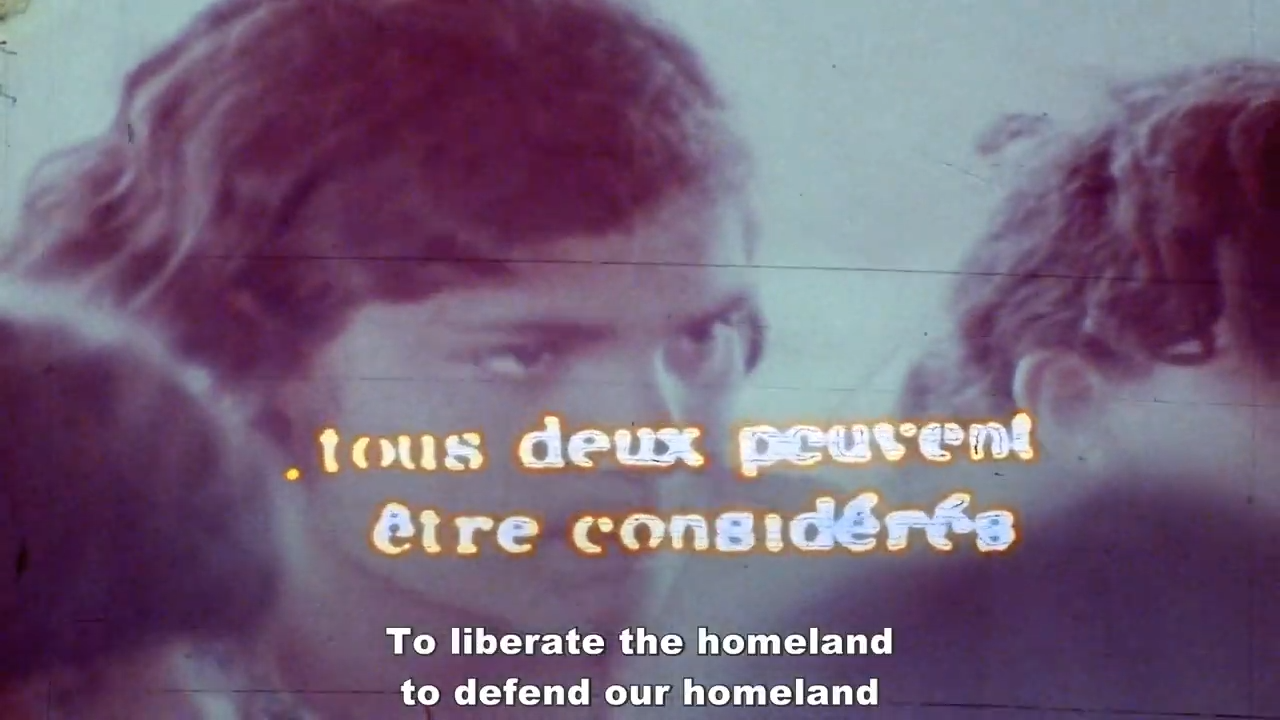
Still from Khadijeh Habashneh’s Children without Childhood (1980).
Together, the films constitute a chronological loop around the pre-Intifada period. Blown by the Wind features a montage of paintings made by Palestinian children visualising their displacement to Lebanon during the Six Day War in 1967; Children without Childhood, produced during the International Year of the Child 1979 by the Palestinian Film Unit/ Palestinian Film Institute, attends to young refugees orphaned at the Tel al-Za’atar massacre of 1976 during the Lebanese Civil War; Ma’loul Celebrates its Destruction accompanies the evacuee families of the titular village as they picnic, led by their elders, in their native land on Israel’s National Day which also commemorates the Nakba of 1948, a fact highlighted through intercut scenes of a teacher delivering a state-authorised lesson about the creation of Israel to his Arab students.
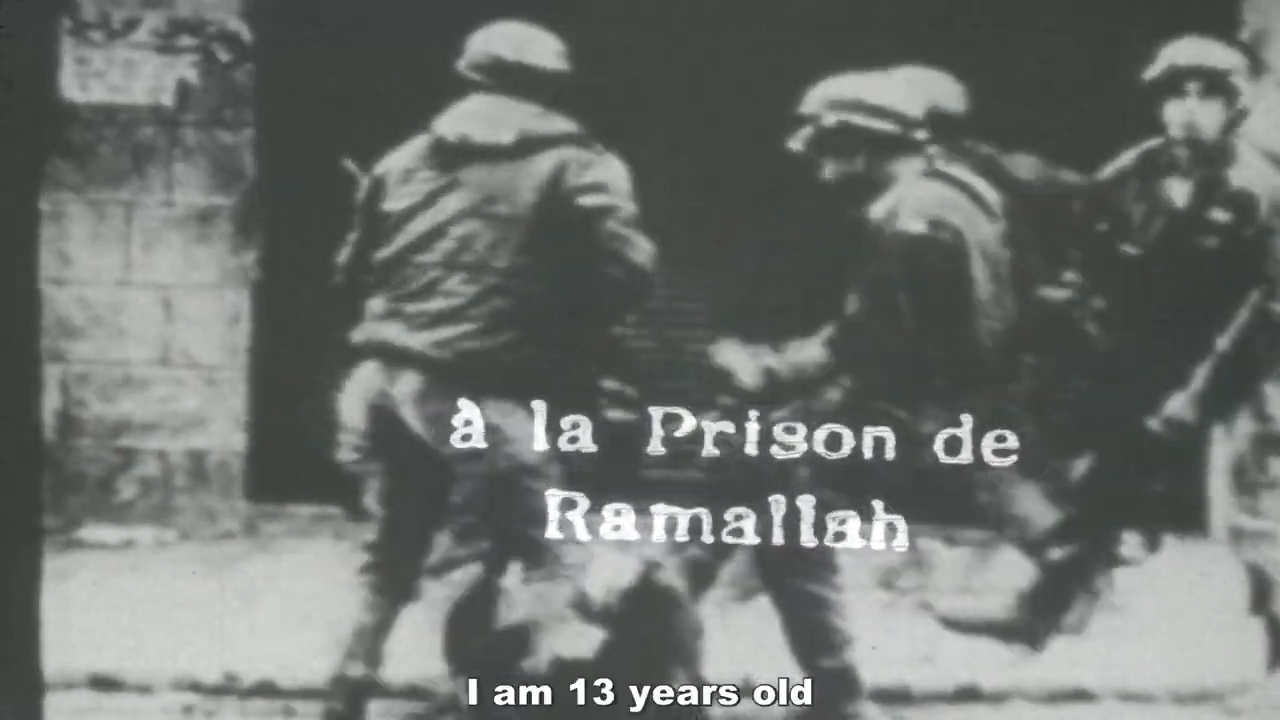
Still from Khadijeh Habashneh’s Children without Childhood (1980).
In all three 16mm films, black-and-white archival footage of events—still and motion, military and legislative, occasionally zoomed in for detail—causing the dislocation of Palestinians punctuates colour recordings of the historical present. Khleifi inserts into his narrative of present-day Ma’loulis retracing ancestral steps, clips of bombardments and amputations, Palestinian resistance fighters training for and combating attacks, as well as Israel’s founding, United Nations proceedings and even images from the Shoah (Holocaust). Madvo and Habashneh intersperse their engagement with refugee children’s artworks and lives with that art’s basis: destruction of their homes in the West Bank and camps in Lebanon respectively. The interplay between monochromatic and colour footage establishes the co-constitutive relation between the past and present signalled by the vintage of the film stock as well as cinematic montage’s ostensible mimesis of memory.
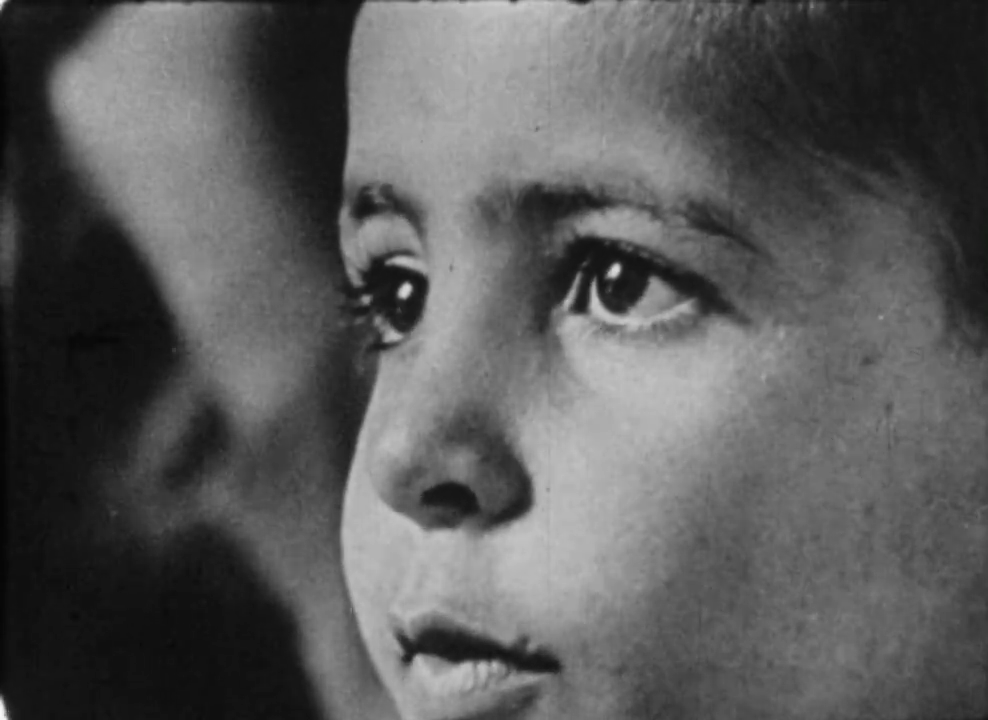
Still from Jacques Madvo’s Blown by the Wind (1971).
In a sequence in Children without Childhood, a teenage boy’s voiceover spans the transition from an archival clip of soldiers assaulting a resistor to a colour scene showing a circle of young Palestinians preparing to liberate their land. Past, present and future fuse together, unsettling temporality. At the end of Blown by the Wind, tinted images of happy children are superimposed on the tragic monochrome ones composed similarly to the tragic images which arrested the flow of time at the film’s start, as though enacting a catharsis through its very body-memory. The play of light evoked by the shifts between monochrome and colour is akin to the occlusion and recuperation of trauma, collective and individual. In Tasting the Sky, Ibtisam Barakat’s memoir of her family’s flight from Ramallah on the heels of the Six Day War, the author recalls her mother’s favourite phrase, “I imagine so”—“batkhayyal: in Arabic… [it] also means ‘to see the shadow of a thought’, as if one is separated from it by a thin cloth.”
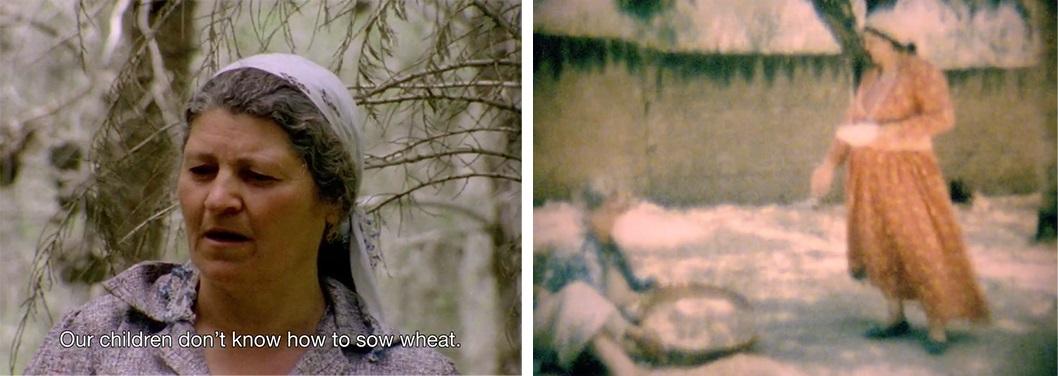
Stills from Michel Khleifi’s Ma’loul Celebrates its Destruction (1984).
Haunted by the shadow of the thought of occupation and colonisation, youth—like the imagined homeland—becomes a distant dream, a postmemory. In Ma’loul Celebrates its Destruction, the interstices between the official archive anchoring the Arab children’s lesson on Israel’s founding and the contemporary document of the picnic at Ma’loul host hazy fleeting 8mm impressions in the form of antique silent ‘home video’-grams. As the exiles’ middle-aged children recline and grandchildren play in the Jewish National Fund-planted fir forest which erased their ancestral village, a grandmother’s lament that her descendants will never cultivate their land is followed by mute, gauzy rushes of peasant women winnowing. In Childhood Without Childhood, too, colour footage of an interlocutor called Abu Hisham, as he recollects his journey as a nine-year-old escaping the Nakba, is elaborated upon by black-and-white film of refugees traversing the colourless landscape, literally “blown” or “winnowed” by the wind, whistling through his voiceover as it is set to folk music.
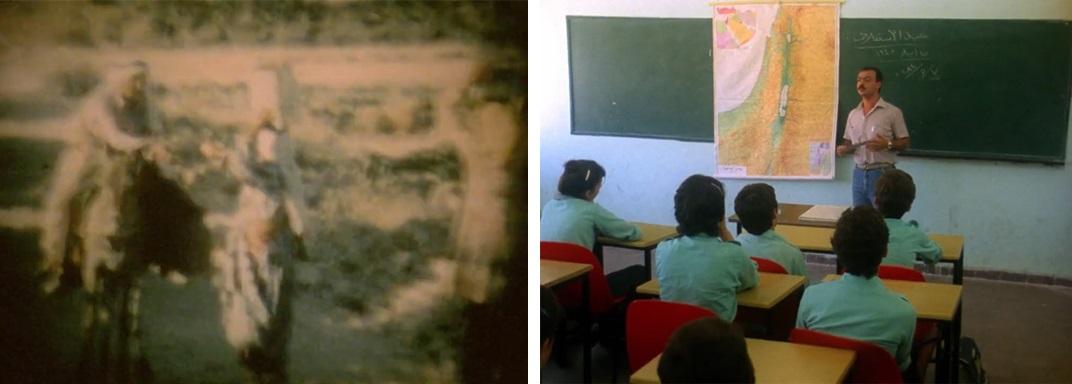
Stills from Michel Khleifi’s Ma’loul Celebrates its Destruction (1984).
Indeed, the affective geographies of Palestine resurrected in the paintings of Madvo and Habashneh’s young subjects, the childlike mural through which the elders of Khleifi’s Ma’loul restore their vanished village or even, in Habashneh’s film, the teenager’s recollection of the humiliation he suffered in a Ramallah prison make apparent the parallels between the colonisations of land and life. In what Toby Rollo terms the “coloniality of childhood,” the dispossessed child forced into traumatic exile experiences the loss or occupation of a childhood in the same way as the loss or occupation of a homeland. Paradoxically, as was noted at the opening of this essay, the very powerlessness that often legally disenfranchises children rightly makes it possible for them to claim rights on moral grounds, and become designated as “militant adults” by unjust laws, as the documentaries gesture towards.
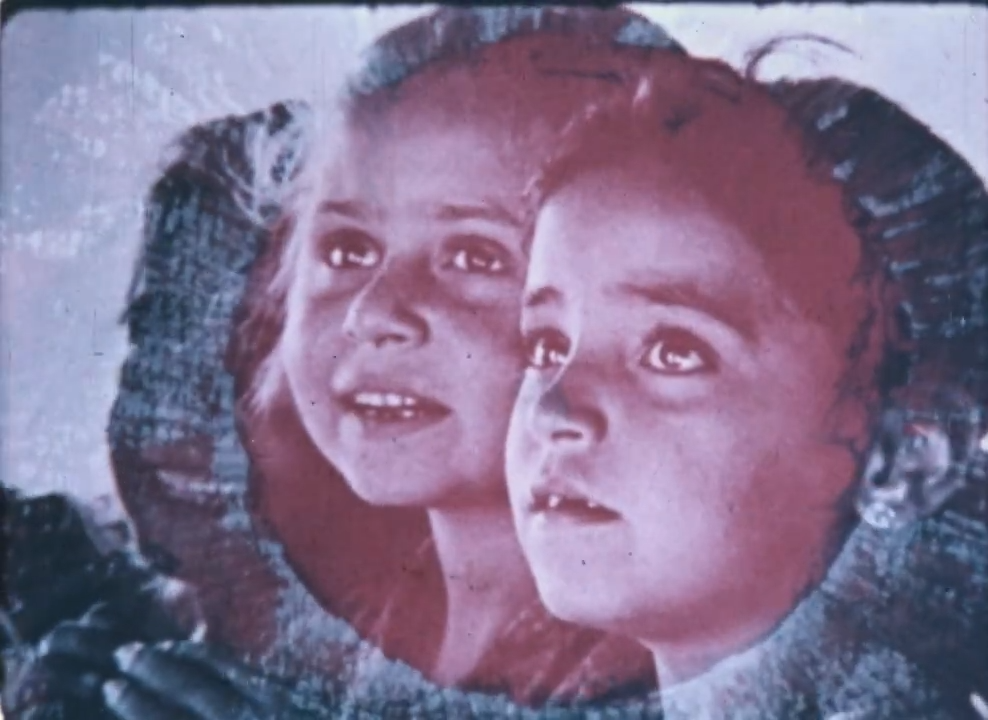
Still from Jacques Madvo’s Blown by the Wind (1971).
Both Blown by the Wind and Children Without Childhood close on an optimistic note: Madvo’s painters radiate hope like their bright orange suns, and we see the orphans of Habashneh’s film slowly become rehabilitated as a lullaby plays on the soundtrack. The end of Khleifi’s telescopic, intergenerational chronicle of a people recalls that of Alfonso Cuarón’s Children of Men (2006)—based on PD James’ 1992 novel of the same name—which predicted a childless dystopia. As the empty verdancy of Ma’loul fades to black, we hear only the sounds of children playing in the forest, as though from behind a shadow.
To learn more about the place of the child in narratives of conflict, read Radhika Saraf’s essay thinking through the idea of the ‘undead child’ with reference to Samira Makhmalbaf’s At Five in the Afternoon (2003).
To learn more about reflections on the ongoing Palestinian genocide, read Sudha Padmaja Francis’ review of Hany Abu-Assad’s Omar (2013), Santasil Mallik’s report on Gaza Lives organised as part of Film Works for Palestine in Toronto, Anoushka Antonnette Mathews’ essay on Abdel Salam Shehada’s Ila Aby (To My Father, 2008) and Kshiraja’s essay on Yousef Srouji’s Three Promises (2023).
All images are courtesy of the respective directors.




